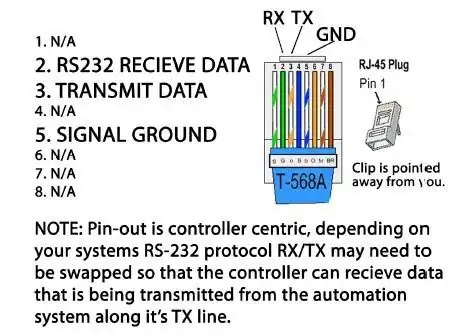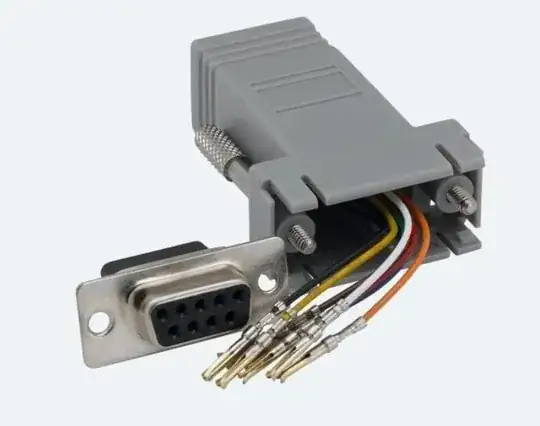I'm trying to control the masking on a projector screen via The Home Remote app and a Global Cache iTach IP2SL device.
The screen masking has a control box that accepts RS232 commands via ethernet cable with a male RJ45. The Global Cache IP2SL device sends commands via a serial port. I have a DB9 to RJ45 adapter attached to the IP2SL device, and ethernet running from the adapter to the control box of the screen masking.
I am able to send commands, however, the screen masking doesn't do anything, and the response I receive seems to be jumbled. I believe I have something wrong with the pinout on the DB9 to RJ45 adapter.
This is the pinout the screen manufacturer provided on their end:
This is an example of the DB9 to RJ45 adapter I'm using (I have several and have tried a few different pinouts):
One possible problem is, I think different manufacturers of these adapters have different color codes for their pins. I have tried several combinations, and do get different responses with each, but all of them are jumbled in some way.
I am using a T568B (straight) cable, but figured I could adjust the pinout on the adapter as necessary to get the same result.
I have ensured I'm using the correct baud rate (115200).
Can anyone assist on this or point me in the right direction? Most of what I've been able to find online has not been very clear or consistent.
Here's the GC iTach IP2SL device for reference:
The path of transmission when a command is sent is: IP2SL male DB9 port -> DB9 to RJ45 Adapter Female DB9 Port -> DB9 to RJ45 Adapter Female RJ45 port -> Ethernet Cable -> Screen Masking Control Box Female RJ45 port (marked RS232). I have no idea on the logic levels. It's Seymour AV screen. I'm not sure the manufacturer of the rollers that are being controlled. I send a command, such as [01S] (to get status). I'd expect something to come back with [01P235] (stopped at ratio 2.35) for example. What I'm getting is more like [??m}] I'm not sure what I'd do with USB anywhere.


